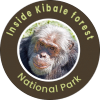Below are some of the Chimpanzee trekking tips one needs to consider, as they prepare for this amazing encounter
- The best time for chimpanzee trekking in Uganda is during the low-season months of March, April, May and November when there are fewer tourists, but keep in mind this is also the rainy season.
- Always remember to carry good boots for the walk in the forest
- Chimpanzee tracking permits must be booked in advance (the earlier, the better).
- To prevent transmitting human-borne diseases to the chimps, anyone who is ill (with the flu, for example) is not allowed in the park.
- A day pack will be required to carry your lunch. (I recommend placing it in a plastic bag in case the food leaks through the paper bag.)
- The weather is unpredictable, so rainproof gear, including boots with strong traction, is recommended, especially during the low/rainy season when the slopes are muddy. If needed, a heavy-duty rainproof poncho can be rented for USh.10,000
- Don’t forget insect repellent!
- The foliage can be prickly — a long-sleeved shirt and long pants will protect your skin.
- Wear hiking gaiters or tuck your pants into your socks/boots to prevent ants from climbing up your legs.
- With respect to photography, chimpanzees can be challenging to shoot in the dense, shaded forest. Add to that their tree-top lounging habits and swift movements, and you’ll fumble with your camera if you’re not prepared. Use a telephoto lens and increase your ISO to capture sharp images of them in action.
